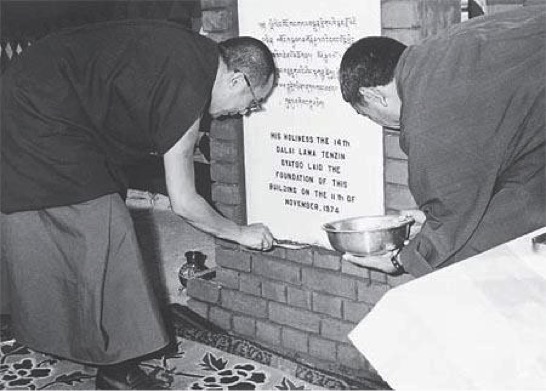About Tibet House

HH the Dalai Lama laying the foundation stone for new building of Tibet House, 1974
His vision has a profound effect on the activities of Tibet House. One focus is on encouraging cross-cultural and inter-religious dialogues, as well as the exploration of relations between science and religion. Another focus is on ecological responsibility for this fragile planet from a Buddhist point of view. These are efforts towards the goal of universal harmony.
From 1959 onwards, Tibetans have been fleeing from the political upheavals in their homeland, travelling the difficult paths across the Himalayas into India. Many brought with them precious objects and books of religious and cultural significance. This formed the seed of the Museum and the Library.
Located in the heart of New Delhi, the five-story facility houses a Museum of valuable Tibetan art and artifacts as well as a Library with nearly 5000 volumes of manuscripts and books, a Resource Centre, a Conference hall, a Gallery and a Bookshop.
Tibet House offers incentives and resources for research and translation projects and publishes important texts and research results. It hosts lectures, organizes conferences, exhibitions, film shows, and festivals. These programmes focus on Indian and Tibetan Buddhist history, religion, philosophy, art, literature and culture, and bear witness to the vital and evolving heritage of the Tibetan people.
As an increasing number of people worldwide get interested in Tibetan studies and Buddhist teachings, the horizons of Tibet House continue to expand. Its mission is not only to preserve the past but also to explore the contribution Buddhism can make for alleviating global suffering.
His Holiness the Dalai Lama emphasizes universal interdependence and the need to develop a sense of harmony and compassion as the antidote to suffering.
